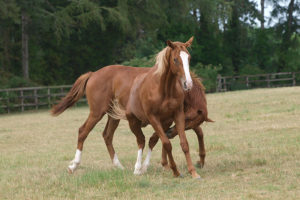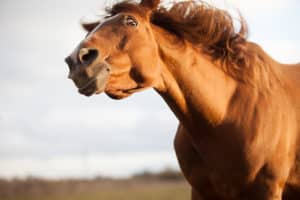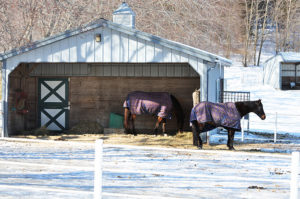
How Real-World Conditions Affect PPID Diagnosis Reliability
A veterinarian shares research evaluating handling, storage, and testing conditions and the reliability of PPID testing.


A veterinarian shares research evaluating handling, storage, and testing conditions and the reliability of PPID testing.

A case study found swelling and pain in the upper jaw between the eye and the ear might indicate an infection in the temporomandibular joint (TMJ) area.

A Brazilian researcher recommends genetic testing of mares showing “stallionlike” behavioral characteristics or infertility.

Researchers found that 37% of the nearly 150 Warmblood horses they examined had at least one lesion on the nasal bone, and nearly 14% had at least one lesion on the mandible (lower jaw).

The Horse asked researchers and equestrian federation representatives for their takes on the new FEI rule banning shaving of facial vibrissae, which are sensory organs commonly called “whiskers.”

Study: Horses tend to shift their laterality, becoming more “left-legged” and “left-eyed,” in stressful situations.

A Norwegian and Swedish study shows that autologous conditioned serum with higher levels of certain biological anti-inflammatories and growth factors is more likely to reduce lameness in treated horses.

Scottish researchers found a half barley straw and half hay ration helped ponies lose weight.

A 26-year-old pony mare recovered fully with treatment after accidentally receiving more than 100 times her usual dose of pergolide.

Biomechanics expert: The wrong rehab program for a horse can be counterproductive.

Researchers measured horses’ facial sensitivity to touch, pressure, and heat. The results could help diagnose cases of equine idiopathic headshaking and improve welfare.

Researchers say progressive changes in diets lead to healthier microbiomes and fewer digestive issues, such as diarrhea and colic.

A study found children falling off their horses experienced more severe and complex elbow fractures than those involved in nonequestrian accidents.

Laminitic horses try to keep off their painful toes as much as possible. But as a new biomechanics study shows, they can’t—at least not all the time.

Horses experience changes in force on their bodies and limbs when they turn. This can affect lameness exams, making them look both more and less lame. And should racetracks be banked?

Researchers found blanketed horses during a Wisconsin winter ate 8% less free-choice hay than their unblanketed peers while maintaining similar body conditions.
Stay on top of the most recent Horse Health news with